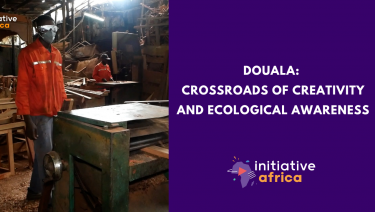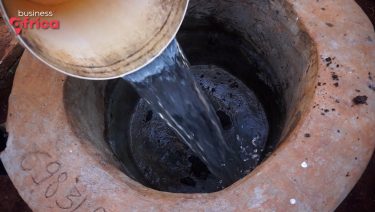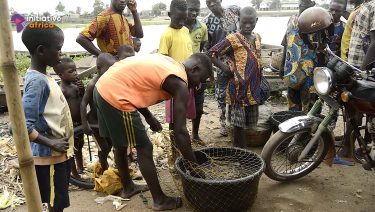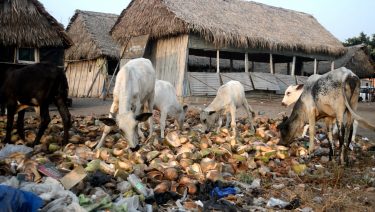Using Selfies, Live Streams, and Satellite Images to Save African Elephants

Michael Sommers
With African elephants so ubiquitous in our collective consciousness, not to mention on our screens, it’s hard to conceive that they’re now officially endangered, having been placed on the International Union for the Conservation of Nature’s Red List of Threatened Species in March 2021.
Over the past century, the African elephant population has plummeted, from an estimated 10 million to 415,000. Habitat fragmentation, human encroachment, and retaliatory killings for crop destruction are major culprits. And despite bans, elephant poaching perseveres, fuelled by an expanding Asian middle class for whom ivory is a status symbol and digital technology that facilitates secret, immediate communications and transactions. However, technology – applied in unexpected and innovative ways – is also becoming instrumental in the fight to save elephants.
For University of Oxford conservation scientist Isla Duporge, accurate monitoring is key to successful elephant conservation. Duporge is part of a research team that’s been using high-resolution satellite images to count elephants from outer space, some 600km from the Earth’s surface. Traditional aerial surveys – in which scientists count elephants from aircraft – can be hampered by poor visibility, fatigue, and double counting. Such inaccuracies are avoided when a computer algorithm does the counting, having been “taught” to identify grey blobs as elephants, even when camouflaged by various backgrounds and lighting situations.
“Satellite images, drones, and GPS tracking are really good at providing accurate data,” says Duporge. “You can track fluctuation in elephants’ movements and behaviour and focus on where to concentrate anti-poaching resources.”
Other conservation hacks depend upon more earthbound technology. In South Africa, the Balule Nature Reserve recently collaborated with Samsung and Africam to create Wildlife Watch, an anti-poaching project where virtual rangers can watch live wildlife videos streamed by camera phones. Aside from a Big Brother-style glimpse into animals’ intimate lives, armchair conservationists can also spot suspicious activities and report them to rangers in the field.
Fighting poachers with movement-triggered camera “traps” isn’t new but using highly sensitive audio sensors to “bug” wild environments, is. The Zoological Society of London (ZSL) and Google Cloud have developed technology that analyses recordings made by acoustic sensors. At distances of up to 1 km, these AudioMoths can pick up sounds such as gunshots and quickly alert the anti-poacher patrols. Cheaper than cameras, the sensors can record continuously for months at a time.
In response to escalating human-elephant conflicts, ZSL conservationists have also been curating elephant “selfies”. As part of a project christened HEAT (Human-Elephant Alert Technologies), they’ve compiled the world’s largest database of some 30,000 thermal elephant images. After being “trained” by the database, thermal cameras are placed in rural communities. When a wild elephant approaches, the camera detects the heat it radiates, alerting residents. Measures can quickly be taken to avoid property destruction, injury, and even loss of life.
Isla Duporge is enthusiastic about these new and ever-evolving technologies – many militaries in origin – being applied to conservation. However, she also warns that tech is no substitute for human beings. “Sometimes there’s too much hype that tech can solve everything. Having well-funded and well-trained rangers who know the landscape really well is crucial, as is getting local communities involved and training them to apply the technologies.”
See also

CLAYROCKSU, leading female Nigerian rock singer
She grew up singing in church and ended up fronting Nigeria’s rock scene. In this exclusive interview, Clayrocksu opens up about what it means to be a rock artist and a woman in a country dominated by Afrobeats. From her early days mixing Igbo and English lyrics, to building a community of Afro-rock musicians, she shares how music became a form of rebellion, healing, and identity. Between faith, family, and fire, her voice carries a message for all the misfits who refuse to fit in. Journalist: Sharafa

MAMADOU MBODJI: President of the African Friends of Nature Network
“Africa on the Front Lines of Climate Change: Understanding, Acting, Resisting” In this exclusive interview, Mamadou Mbodji, President of the African Friends of Nature Network, reflects on three decades of fighting for climate justice. His message: “Africa can no longer wait. There is an African emergency.” An essential exchange, full of warning and hope. Journalist: Laurence Soustras

Kerfalla Camara: From the asphalt to the stage, the circus as hope in Guinea
Making circus a lever for education and social change. Born in the streets and trained in the circus, Kerfalla Camara is now the head of Circus Baobab, Guinea's first circus company, which has become a benchmark in West Africa. In this exclusive interview, he discusses: - The rebirth of Circus Baobab, a socially engaged circus - The fight to provide education to out-of-school children - The Guinean cultural roots in each show - The courage to tackle taboo subjects, such as female genital mutilation, in their latest creation, Yongoyely A powerful account of art as a tool for emancipation and social transformation. Journalist: Alexandra Vépierre

Douala: Crossroads of Creativity and Ecological Awareness
In Cameroon, the artisanal woodworking industry is taking an eco-responsible turn. Faced with increasing deforestation, some sculptors, like Jean-Claude Dongmo, are choosing to recycle abandoned materials into unique works of art. In this report filmed in Douala, discover how these artisans: - Reinvent their traditional know-how - Train young people in sustainable trades - Contribute to the preservation of Cameroon's forests An immersion at the intersection of art, knowledge transfer, and environmental commitment. Journalist: BOUNYA Maxime Farrel



